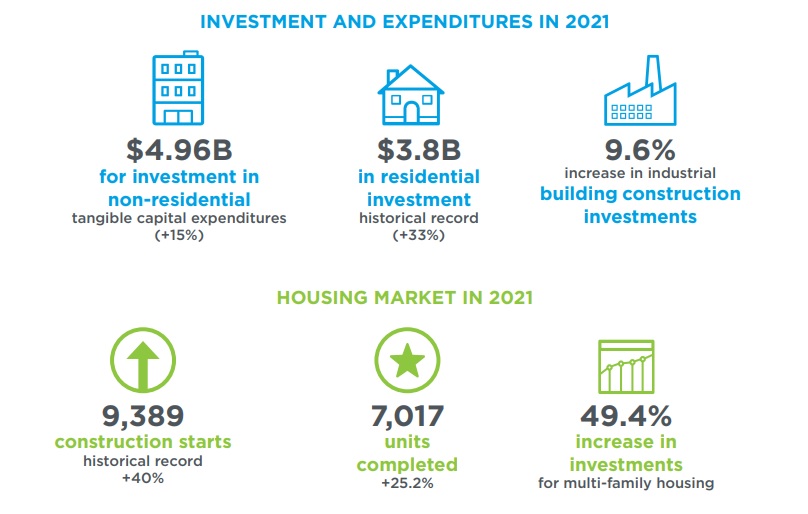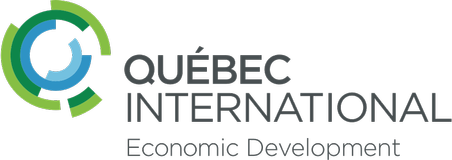SUMMARY
With $5B in spending intentions in 2021, investments in non-residential tangible capital expenditures in the Québec City CMA increased by 15% compared to 2020, when the region had registered $4.3B in investments. Most of this increase was due to non-residential construction, which accounted for almost two thirds (64.8%) of spending intentions, compared to slightly more than one third for machinery and equipment.
The overall building construction sector (non-residential and residential) in the CMA also broke a 30 year record, with a 25% increase in investments compared to 2020. Despite the pandemic, the CMA continued the progression started in 2017.
Data on the real estate market also shows a historical performance of the Québec City CMA in 2021, both in terms of construction starts, units under construction and completions. Construction starts increased by 40% compared to 2020, while the number of units under construction and the number of completions increased by 38.9% and 25.2% respectively. This is a record in all three components for the past ten years.
Despite this performance, like in the rest of the province, the price of real estate in the CMA increased, mainly due to the supply shortage. There was a drop in the number of new listings1 (-5%) and the number of current listings2 (-43%). This decrease had a direct impact on the total number of transactions (sales), with a 4.2% drop compared to 2020.
Along with other factors like inflation and supply chain disruptions, this led to a sharp rise in prices. Although the number of transactions decreased in 2021, the sum of all real estate transactions in the Québec City CMA increased by 7% (reaching $3.3M).

Conclusion and outlook
In 2021, the Québec City CMA registered a 15% increase in investments in non-residential tangible capital expenditures (physical assets), mainly due to the construction sector, which accounted for almost two thirds (64.8%) of expenditure intentions vs. one third for machinery and equipment. However, the proportion of private investments these expenditures seems to be slowly decreasing, on the one hand, due to stagnation in the amounts invested by the private sector, and on the other hand due to an increase inthe amounts coming from public funds.
The overall building construction sector (non-residential and residential) in the CMA also broke a 30-year record, with a 25% increase in investments compared to 2020, although data shows that the proportion of non-residential construction keeps decreasing in favour of residential construction.
Despite the pandemic, the building construction sector continued the progression started in 2017. The coming years seem promising, with many projects in progress or announced, in addition to all the expenditures surrounding the projects that are meant to improve transportation and mobility in the CMA (tramway, third link, tunnel, Île D’Orléans Bridge, etc.).
To consult the other sections of the Report and Outlook document, visit the Economic data section.




